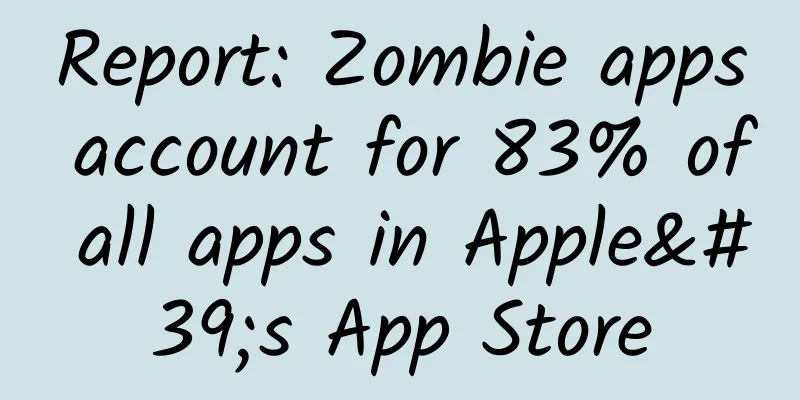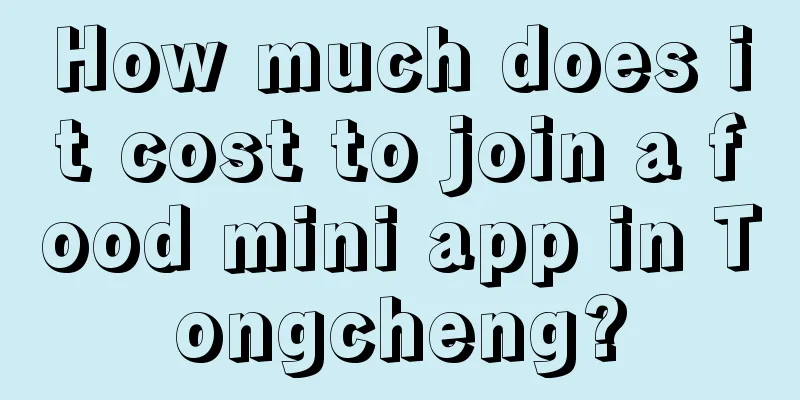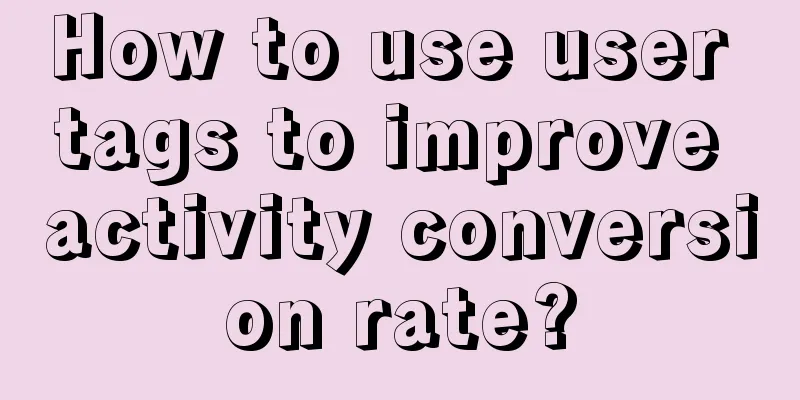Report: Zombie apps account for 83% of all apps in Apple's App Store

|
App analytics company Adjust released its latest report on Monday saying that the app economy shows no signs of slowing down, and Apple's iOS App Store is continuing to grow, with the total number of apps now exceeding 1.42 million. However, the report also pointed out that 83% of the applications in Apple's App Store are so-called "zombie applications", that is, applications that consumers cannot actually "see". This proportion is higher than 74% in January last year. Adjust's criteria for determining "zombie apps" is that if an app appears in the top 300 rankings of the App Store twice in three days, it will not be considered a "zombie app." This is because if an app can enter the rankings, it can be discovered by end users browsing the app category list. Currently, in the iOS App Store in 155 countries, each store will display the top 300 apps in 23 categories, including 18 subcategories under the "Game" category. In addition, the listed apps are divided into "free" and "paid" categories. But in the "zombie" state, an app can only be found when a user searches for apps in a specific category or directly searches for the name of the app. The total number of “zombie apps” has doubled The report pointed out that in 2014, the number of "zombie apps" in Apple's App Store nearly doubled, from 657,778 in January to 1,136,501 in December. During this period, the total number of apps in this app store increased by 54.3%, from 889,231 to 1,372,371. In March last year, the total number of apps in the App Store broke through the 1 million mark for the first time, and zombie apps reached this number in September of the same year. Adjust also pointed out that in some categories, it is more difficult for new apps to compete with successful apps. For example, from a global perspective, the "Business" category is currently dominated by a few successful apps, and new apps are unlikely to make the list. These apps are best to classify themselves in less competitive app categories, such as "Productivity" or "Finance". Meanwhile, categories like Navigation and Sports have much lower rates of zombie apps, because apps in those categories are often targeted at specific locations and therefore have to compete with fewer local apps. There is a positive correlation between the size of an app category and the percentage of "zombie apps". For example, since the smallest app category in the App Store is "Weather", half of the weather apps make the list. However, once the total number of apps in an app category reaches around 250,000, the percentage of "zombie apps" rises rapidly. For example, the percentage of "zombie apps" in the "Games" category is as high as over 80%. International Market In the international market, "zombie apps" also face their own challenges. Today, the proportion of "zombie apps" in the German and Chinese App Stores has reached 80.6% and 81.3% respectively, higher than Japan and Russia (77.6% and 73.2% respectively). Sometimes, app stores benefit from having fewer apps trying to make it into their country’s app store rankings; at other times, successful apps are translated into the country’s language and subsequently ranked when they enter their domestic market, which also affects the proportion of “zombie apps”. The year-over-year increase in the percentage of zombie apps highlights how important it is for app developers today to understand and utilize ASO (App Store Optimization) techniques, which are similar to SEO (Search Engine Optimization) techniques in the search world, but focus on how to get high rankings on the search results pages of app stores. In addition, this indicator is also useful for app developers to carefully select app categories. Since apps can be classified into different categories, Apple allows developers to choose up to three categories. If developers choose markets with less competition, they will undoubtedly gain a great advantage and help their apps get out of the ranks of "zombie apps". Is the App Store dead? Adjust boldly declared in its report that Apple's "App Store is dead", but industry insiders pointed out that this is not true. This is because today, the App Store app rankings are just one of the ways for users to discover apps, and they are becoming less and less important. Users often use methods other than rankings to find apps, such as viewing featured apps and direct searches. Apple itself has also made some improvements in this regard, adding relevant search suggestions to its iOS App Store last spring. The app discovery challenge has also attracted other companies to the space, most notably Facebook. Facebook now has 526 million monthly active users who use the service exclusively on mobile devices, and the company just announced that mobile advertising now accounts for 69% of its total ad revenue. Many of the ads are app install ads, which drive users to app stores for downloads, a business that is both very profitable for Facebook and very helpful for end users. |
<<: Apple has become the most profitable company in history, but what are the crises?
>>: Which market makes the most money? Tencent tells you!
Recommend
Twenty thousand tons of central reserve frozen pork will be put on the market on February 21! These knowledge points cannot be missed!
Since the African swine fever last year, the coun...
The first M&A case in 2016: Mogujie and Meilishuo join hands
On the first day of the New Year, news about the ...
The Leaf Academy Game UI Improvement Class ended in March 2020 [HD quality with some materials]
The Leaf Academy Game UI Advanced Class ended in M...
QQ is testing a "friend expansion" feature similar to the message in a bottle, is it again getting involved in stranger social networking?
[[259529]] Recently, QQ launched a stranger socia...
Pet mind reading: Solve your dog raising troubles
Course Catalog: R-65 It’s not difficult to become...
Cleverly use leverage to attract 1 million users
How to define seed users ? Three conditions for d...
watchOS 2 beta 3 officially released to developers
[[139584]] Today, Apple released the third beta o...
Practical review: How to effectively place advertisements in WeChat Moments?
Written in front: Since I am basically a novice i...
Solid info! Tips for writing information flow copy!
I worry about writing creative ideas every day Ho...
How to create a hit on Zhihu!
When it comes to creating high likes on Zhihu, th...
How to transfer Zhihu content to Douyin, a project where novices can also earn hundreds of dollars a day
Zhihu content transfer Douyin gameplay, novices c...
Automatically detect friends and modify notification ringtones. These two tools make your WeChat more useful!
When it comes to using WeChat, there have always ...
Tips for optimizing Toutiao advertising accounts
In recent years, mobile apps have become more and...
Expert Tips | Factors that influence inclusion in Xiaohongshu!
Why can't I search for the notes I posted? Wh...









